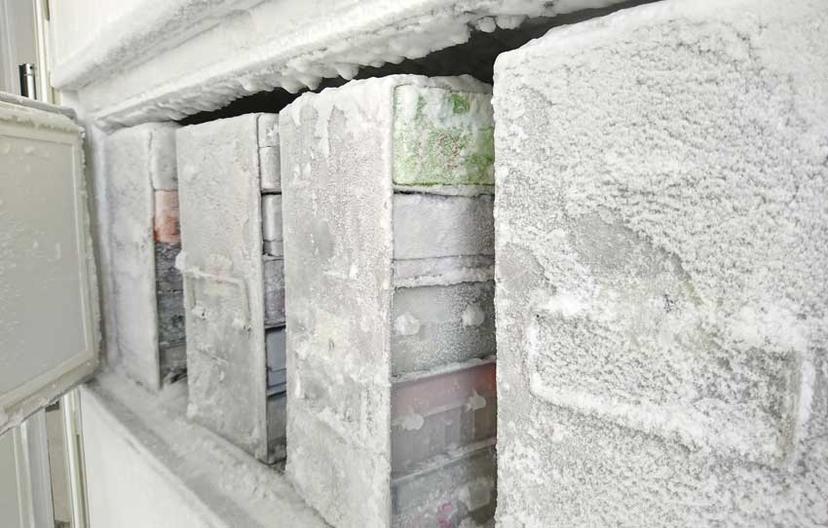7 Things You Didn’t Know about Your Lab Freezers
Read on to discover facts about your lab’s treasure trove – the -80⁰C freezer
20 Dec 2017

1. Every time you open the door to the -80⁰C freezer, it can take 10 minutes to recover its temperature.
Have you ever left the door to your freezer open ‘just for a second’ to quickly sprint to and from your lab bench? When you open the door to an ultra-low temperature freezer, they are designed to recover the temperature as soon as possible. But it can take up to 10 minutes to recover the set temperature each time the door is opened.
A flammable refrigerant gas helps pull down the temperature faster, and saves around 15% electricity. Effective insulation, door gaskets and a claw door can help prevent warm-up. Read more about factors that affect your freezer in this ‘Key Considerations for Lab Freezers’ guide by NuAire.
2. Small freezers use more energy than large freezers.
Contrary to what you might expect, small freezers consume more energy per cubic foot than large freezers. If energy costs are important to your lab’s allocated budget, another cost-effective option is to share a large freezer space with another research group or consider a freezer room in a building where multiple, shared freezer spaces are offered to each lab.
3. The displayed digital temperature may not always reflect the internal temperature.
Almost always, we rely on the marked digital display to assure us that our samples are still frozen. There is, however, a variability in the displayed temperatures and the actual internal temperature of your freezer. This inconsistency is due, in part, to the position of the temperature sensors inside the freezer. Typically, sensors are positioned at the top, middle and bottom of the inner compartments. It’s worth reviewing the manufacturer’s test data for your freezer to learn of the temperature lag and where the temperature sensors are positioned.
4. If you place warm samples directly into your freezer, you can risk a freezer breakdown
Although it might not seem like a big deal to place tubes of room-temperature samples directly into the freezer, this type of usage of your -80⁰C freezers, built more for the storage of frozen samples rather than freezing them, can result in mechanical failure.
For a clinical facility that requires freezing warm samples quickly, a blast freezer would be a more appropriate choice. In regular labs equipped with a -80⁰C freezer for sample storage, it is good practice to freeze samples on the lab bench using dry ice before putting them into the freezer.
5. Frost build-up is very common but there are solutions to prevent it.
Your lab is not alone in its battle to open a freezer door jammed shut by a thick blanket of frost covering the inner compartments. It is very common for freezers at ultra-low temperatures to gather frost when low temperature surfaces come into contact with humidity in the room.
Claw latches in the freezer door can minimize frost build-up. Gaskets and insulation on the inner and outer doors help maintain temperatures. For example, low-wattage halo bypass heaters can help keep gaskets around the outer door clean. To learn more about avoiding frost, read this guide by NuAire.
6. Your freezer doesn’t need to be noisy.
If your freezer is positioned next to your desk or next to a busy lab space, the freezer’s noise can become an irritant or, in extreme cases, a health hazard. NuAire assures that good quality freezers need not be noisy. The NuAire freezers are rated at only 47 dBA, similar to the noise levels in a quiet suburban neighborhood at night, versus other freezers which can roar up to 73 dBA, similar to the noise levels of a vacuum cleaner.
7. There should be no storage on top of your freezer..
Freezers need proper ventilation to release the warm air from the interiors. A minimum space of 8 inches on the top and a clearance of 5 inches on either side and the back is recommended. (Read more about factors that affect your freezer in this ‘Key Considerations for Lab Freezers’ guide by NuAire.)
So, clear up those empty styrofoam boxes you’ve carefully stored above your freezer!
Did you like this article? Sign up to have more editorial articles like these sent directly into your inbox.
